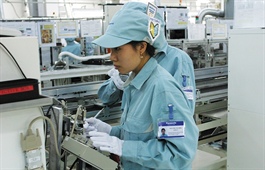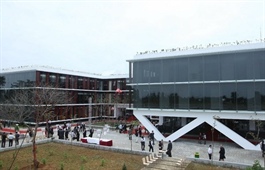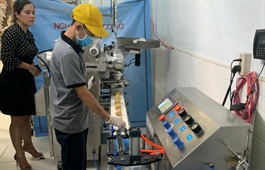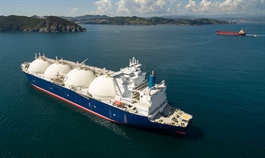Electricty dispatch centre asks for better infrastructure
Electricty dispatch centre asks for better infrastructure
The National Load Dispatch Center (A0) has asked Vietnam Electricity (EVN) to equip it with better infrastructure for the operation of a future wholesale and retail electricity market with more renewable energy resources.

A representative of the centre said: “Wind and solar power plants have been put into operation on a large scale but data on their scale and generating capacity is not yet accurate.”
The representative added that rooftop solar power, with a capacity of up to 9,583 MWp, was affecting the load chart, making it tough to plan the power system operation as well as the market, especially due to the limitations of the transmission grid, particularly the 500kV / 220kV grid in the north.
The centre also said the operation processes of the hydroelectric plants with a capacity of more than 30 MW had shortcomings to fit with electricity market regulations.
As the future infrastructure will convert the transaction cycle from 60 minutes to 30 minutes, while the core software has reached its limit, the centre has asked EVN to soon install new tools.
Leaders of A0 also suggested the EVN consider offering supporting services for electricity loading and dispatch to develop the market.
It also asked EVN to approve its plan for upgrading and expanding the existing infrastructure systems such as SCADA / EMS to better collect metering data due to the sudden development of renewable energy for the wholesale electricity market and the growing requirements for energy security.
At the same time, it asked EVN to equip the Electricity Market Management System (MMS) system for after 2022 to ensure the infrastructure for the wholesale/retail electricity market with renewable energy.
Speaking to the Vietnam News Agency, A0’s representative said in 2021, it would set up better systems to improve the economic efficiency of the electricity system and minimise electricity costs for the country, adding it would develop the information technology infrastructure for the future for the wholesale electricity market.
The centre also planned to complete the project of upgrading the IT infrastructure to serve the competitive wholesale electricity market of Viet Nam (VWEM) in 2020-2022 as well as apply open-ended technical innovations and scientific research.
The centre said it would improve the quality of short-term and long-term load forecasting for uncontrollable power sources including renewable energy, rooftop solar power and wind power sources.
With an increasingly large-scale power system and the development of renewable energy sources to replace fossil fuels, the centre said it would propose solutions to strengthen the legal framework for renewable energy sources.
A0 said it would research and install storage equipment to fit with the increase in renewable energy sources to meet local operational requirements and standards
Regarding human resources, A0 would recruit new engineers and improve the existing ones with more quality training to meet the requirements of a wholesale electricity market.
According to the centre, there are 100 plants directly participating in the electricity market with a total installed capacity of 27,526 MW, accounting for 46.3 per cent of total installed capacity of power plants controlled by the national dispatching level. In 2020, four new factories joined the market with a total capacity of 1,837 MW. The total cost for those plants was VND122 trillion (US$5.3 billion).
Last year, the centre prepared to operate the wholesale electricity market including the calculation and announcement of market electricity price (CSMP), market capacity price (CCAN), total market price (CFMP), rate of electricity purchase and cost of purchasing electricity from some factories of power corporations.
It also helped compile five processes regulating the operation of the competitive wholesale electricity market and reported to the EVN on the electricity market operation in 2021-2030 in the EVN’s Power Plan VIII.
The ENV is eyeing the operation of a competitive retail electricity market in 2021 after running a competitive wholesale market since 2019. The plans were specified in 2013, with the marketplace set to be developed in three distinct parts – the power generation market, the wholesale market and the retail market.






















